Slip Hazards and Safety
Members can click here for an ad-free version of this talk!

Slip Hazards Safety Talk
Slips, trips, and falls are one of the leading causes of injuries and fatalities in the workplace. According to OSHA, slip, trip, and fall incidents cause 15% of all accidental deaths and are second only to motor vehicle incidents as a cause of fatalities on the job. These types of incidents can result in life-changing injuries to the employees who suffer them. These incidents are also very costly for businesses. HUB reports that the average slip and fall injury costs $20,000.
Causes of Slips in the Workplace
Recognizing and addressing the hazards that cause slip incidents should be a focus in the workplace. Slips happen when there is too little friction or traction between the footwear and the walking surface.

- Wet or oily surfaces
- Poor weather conditions
- Poor lighting conditions
- Loose, unanchored rugs or mats
- Flooring or other walking surfaces that do not have the same degree of traction in all areas
Slip Prevention
- Practice good housekeeping to prevent slips in the workplace.
- Keep walkways and paths clear of water, snow, ice, oils, etc., to reduce slippery conditions.
- Place signage or barricades around slippery conditions to alert personnel in the area until it can be cleaned up.
- Secure floor mats or other materials that need to be on the ground, so they do not shift when individuals walk on them.
- Wear the proper footwear for the conditions. Footwear with good tread makes better contact with the walking surface, which leads to less of a chance of a slip.
- Take smaller steps or shuffle your feet when there are slippery conditions present that you cannot avoid. Taking larger steps can lead to your balance being thrown off, resulting in a slip.
Slip incidents are hard to avoid if there are slippery conditions or other hazards present that cause slips. The key is to eliminate these hazards, so individuals are not exposed to them in the first place. If there are no conditions where there is too little friction or traction between an individual’s footwear and the walking surface, then there is no slip.
Discussion point:
-What are some hazards that can cause slip incidents in our workplace?
Slip, Trip, and Fall Safety Presentation
Looking for a complete safety meeting on slips, trips, and falls? This safety meeting focuses on injury statistics , common slips/trips/fall hazards, and best practices to reduce the risk of injuries.
This product bundle includes an editable 10-slide PowerPoint presentation, an editable 7-question quiz, an answer sheet, three related safety talks , and a sign-in sheet.
This product provides everything you need to have a safety meeting and the supporting materials to create a longer safety campaign to keep safety at the top of your employees’ minds.
Save your time by purchasing this slips, trips, and falls safety bundle!

Do you want downloadable PDFs of all of the talks? Join as a member and get all of the 250+ free talks as well as 300+ additional talks in PDFs that are easy to download and print!

Toolbox talks for safety experts
How To Prevent Slips, Trips, And Falls
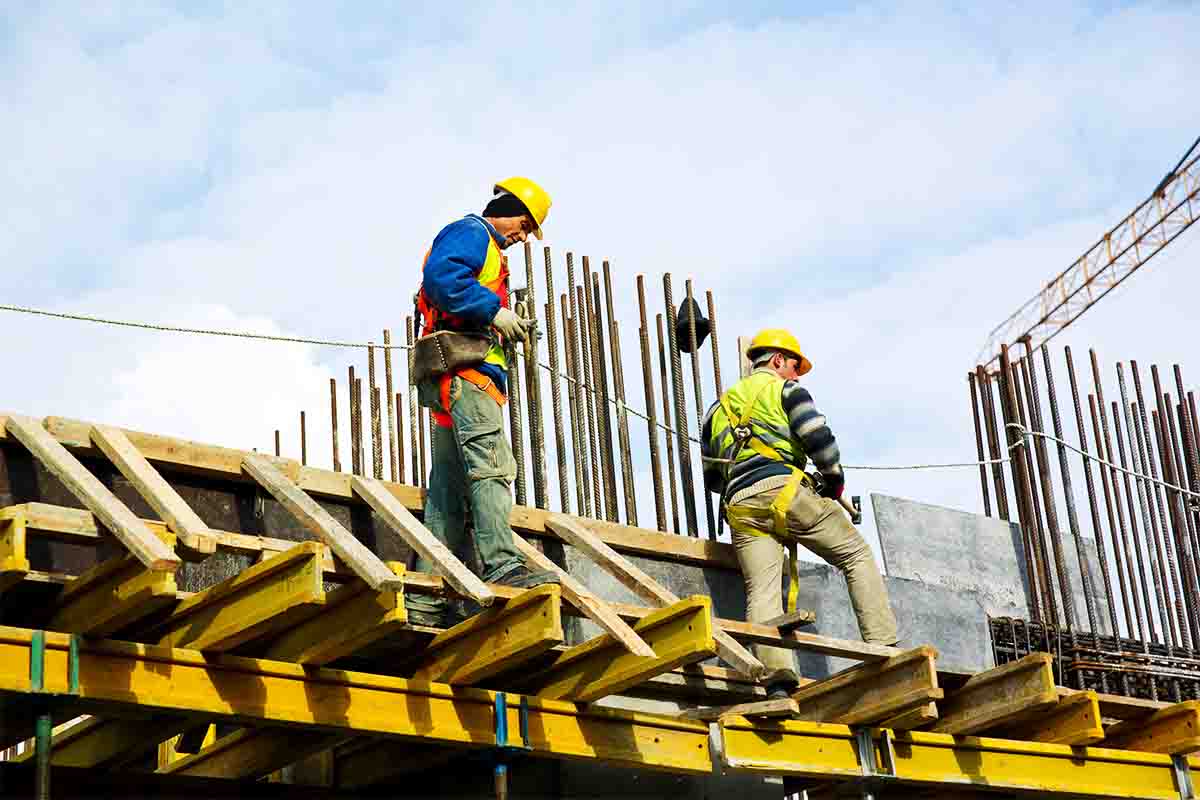
Nobody ever thinks that they will be the ones to slip, trip, or fall. Everything is going smooth until it’s not. The construction industry accounted for just less than 50 percent of all fatal falls, slips, and trips in 2020.
Unfortunately, this is not as surprising of a statistic as it should be. You might think that with the inherent risks of the trades, we should expect there to be such incidents. But slip, trip, and fall injuries are preventable.
Nothing will slow your work down more than a workplace injury. So, let’s see how we can contribute to the prevention of slips, trips, and falls.
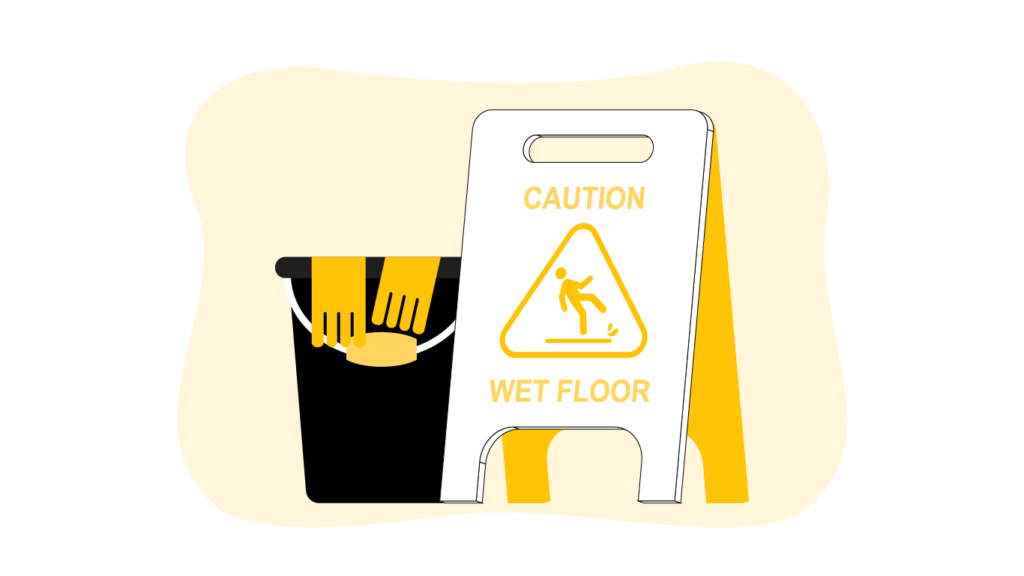
“Prevent falls and slips, or you’ll have a hospital trip.”
Why Toolbox Talks & Safety Is Important
OSHA and other organizations encourage daily toolbox talks that give statistics and produce general awareness about workplace safety hazards. Sharing statistics and experiences like those mentioned above can be beneficial in increasing awareness so that you can prevent workplace injuries or death.
Reminders can help workers to be more cautious and aware of fixing problems before they happen and prevent accidents in general. An example toolbox talk template can be seen below.
OSHA Regulations & Standards for Slips, Trips, and Falls Hazards
An understanding of OSHA regulations can help us to be aware of data-driven safety measures that should be put in place to prevent injury and death. Relevant standards include:
- 1910 Subpart D – Walking-Working Surfaces ,
- 1910.36 – Design and construction requirements for exit routes and
- 1910.37 – Maintenance, safeguards, and operational features for exit routes
However, beyond just giving rules, OSHA recommends implementing programs and procedures to mitigate risks, so we must establish a job site culture that expects everyone to follow those regulations.
OSHA regulations identify the following challenges related to slips, trips, and falls:
- Poorly organized job sites can result in workers tripping over tools, materials, and trash. Bad housekeeping and failure to dispose of garbage or clear out debris and residue can also result in a compounding pile-up one day after the next, thus resulting in trip hazards. OSHA officers can perform random walkthroughs of job sites, and if they decide your housekeeping is not in order, they will fine the company.
- Falling from ladders is a real danger because of improper setup. OSHA 3150 mandates that you set up scaffolding and ladders on solid-level surfaces. You also might be in the bad habit of carrying items up and down an extension ladder, step ladders, or scaffolding. OSHA standards highlight that you should maintain 3 points of contact with your hands and feet. That means you can’t carry things up the ladder. It would be best if you instead used a roof derrick for more oversized items or a bucket and rope to hoist equipment and tools to upper levels.
- Utilizing fall protection is essential in preventing falls , which have the highest potential for extreme injuries and death. The construction industry has been able to choose the fall protection systems it uses on a case-by-case basis since the 1990s. In 2017, OSHA extended this freedom to general industry. In the construction industry, personal protective equipment such as harnesses and lanyards is expected to be worn at heights 6 feet and above. On open exposures that are 4 feet and higher, you should use guardrails and toeboards.
Slips, Trips, and Falls Hazards
To work towards the prevention of slips, trips, and falls, we need to understand what a safety hazard is.
Examples of safety hazards in the construction industry are the following:
- Uncovered cables on the floor
- Uneven surfaces
- Debris or waste caused by poor housekeeping
- Wet surfaces
- Ladders that haven’t been secured

Slips, Trips, and Falls Toolbox Talk Template
In order to prevent slips, trips, and falls, it is important to be aware of the hazards that can cause these types of accidents. Some common causes of slips, trips and falls on construction sites include:
- Wet or icy surfaces
- Poor lighting
- Loose debris
- Tools on the ground
- Unguarded openings
- Lack of proper fall prevention equipment
To avoid these hazards, take the following precautions:
- Wear appropriate shoes with slip-resistant soles
- Use caution when walking on wet or icy surfaces
- Make sure all walkways and stairs are well-lit
- Sweep up any loose debris or tools on the ground
- Use appropriate PPE
- Understand how to use PPE correctly and safely
Who is responsible for preventing slips, trips, and falls?
Everyone at work has a responsibility. The employer is ultimately responsible, but we should all look out for the well-being of ourselves and our colleagues.
We do this by learning and understanding instructions for PPE and for alerting colleagues to openings; by tidying away tools after use, and cleaning out workspaces. If you spot an issue relating to the weather or to lighting that is faulty, report it so that the company can fix it before it causes an accident.
How To Prevent Illnesses And Injuries Related To Slips and Falls
- Immediately clean up any spills, and demarcate any hazards —rope-off areas where there could be chemicals or other condensates. An injury could occur from hitting the ground due to a slip. Moreover, severe illness and death could result from slipping in corrosive or biohazardous materials.
- Cover holes and eliminate uneven surfaces that could have foot traffic. You could unknowingly trip and fall to the ground. If the hole is large enough, you could fall in, thus risking more than a minor injury.
- Provide proper lighting to ensure visibility so you don’t trip on what you cannot see.
- Use fall protection in the form of guardrails and personal protective equipment so that a person cannot fall over an open exposure, even accidentally. Falling from heights 4 feet and above puts you at serious risk of death.
- Establish a routine to inspect fall protection. It’s in place to save your life. You will want to make sure that it will work to protect you from injury or death.
Questions for the Employees
After a discussion, you may want to test everyone’s knowledge and retention of the information to apply what they’ve learned.
- What percent of workplace fatalities are from the construction industry?
- What are the potential causes of injury, and what could happen on your job site?
- How would you feel if an injury or death occurred on your job site?
- What can you personally do to prevent slip, trip, and fall incidents?
- What is our slips, trips, and falls safety talk slogan?
Email Template To Promote Slips, Trips, And Falls Safety
Sending a concise email can help to promote safety. Use this email template, which includes the highlights, and add more bullets as needed to address particular concerns for your job site.
Hello Team,
Let’s all be aware to prevent falls and slips, or someone will have a hospital trip.
The construction industry accounted for almost 50 percent of all fatal falls, slips, and trips in 2020.
Understanding our job site hazards and the ways we can mitigate risks is crucial to prevent us from being amongst those statistics.
- Remember to clean as you go and stay organized.
- Use handrails and ask for help when carrying big loads so that the extra hand is available to grab railings and you have full awareness of where you are walking.
- Use fall protection and PPE.
Increase your awareness as you are working. When you see a potential hazard, immediately report it and work to resolve it to prevent injury to yourself and others.
Construction Site Management/Foremen
Create A Safety Culture
You are now highly knowledgeable in the prevention of slips, trips, and falls. It is your responsibility to encourage your workers to increase awareness of potential hazards and processes for reporting. All incidents are preventable ! Remember, you must “prevent falls and slips, or you’ll have a hospital trip.”
Slips, Trips, and Falls toolbox talk
A simple, 5 minute outline of what to cover in a toolbox talk on Slips, Trips, and Falls.
Download a Slips, Trips, and Falls toolbox talk pdf
Slips, trips and falls are a common reason for many of the injuries in workplaces. They can cause minor injuries but can also lead to serious, long-term injuries. Many slip, trips and falls are avoidable and there are usually easy solutions a workplace can apply to control the risk, either by eliminating or minimising it. It could be as simple as cleaning up a spillage straight away, or moving a cord off a walkway which can prevent injuries from occurring.
Why run a Slips, Trips, and Falls Toolbox Talk?
- Prevent unnecessary injury from slip, trips and falls by improving awareness and training
- Fewer injuries means higher productivity
- Makes sure workers know what to look for and what to do about it to reduce the risk of an injury occurring
What to watch out for that are common causes of slip, trips and falls?
- Poor housekeeping & messy sites
- Poor lighting
- Uneven walking surfaces
- Clutter on site
- Uncovered cords and cables
- Weather conditions (e.g. rain, ice, dust)
- Obstructed views
- Unsuitable footwear
- Distractions (e.g. cell phone, other workers)
What can you do to help prevent slips, trips and falls occurring?
- Keeping work areas clear & tidy from clutter, obstructions and rubbish
- Any waste placed in designated bins
- Clean up any leaks or spills immediately
- Put tools and equipment away
- Wear suitable footwear (e.g. grippy, anti-slip)
- Ensure work areas are well lit and sufficient light for work
- Keep cords and cables out of walkways, covered or secured
- Be aware of your surroundings and focus on what you are doing
- Work to the weather conditions
What if a slip, trip or fall occurs or nearly occurs?
- Report all slip, trip and fall accidents and near misses, with or without injury, this will help identify the hazards and implement control measures to prevent reoccurrence
Key takeaways
- Simply cleaning up your work area as you go, can help reduce slip, trips and falls
- Make sure you are always aware of your surroundings and look where you are walking
If you see a hazard that has the potential to cause a slip, trip or fall then pick it up or fix it – don’t wait for someone else to do it. Do it yourself!
Sales Inquiries Contact:
- AU 02 5104 6116
- NZ 09 886 3309
Support Inquiries Contact:
- [email protected]
- Help Centre
- Media Enquiries
- Toolbox Talk Topic Tool
- Health & Safety Consultant Directory
- Terms and Conditions
- Privacy Policy
- Account Owner Terms
- Facebook logo to SaferMe FACEBOOK PAGE
- Twitter logo to SaferMe twitter PAGE
This website requires Javascript for some parts to function properly. Your experience may vary.
Try Raken for Free - Connect with Sales
Slips, Trips, and Falls Safety Talk
Hazards on the jobsite can cause slips, trips, and falls. Learn how to protect yourself and prevent injuries.
Slips, Trips, and Falls Toolbox Talk
Construction sites are full of many hazards but most workers seem to forget about slips, trips, and falls. It is reported that nearly 15% of all accidental deaths are from incidents related to this. These types of accidents are also extremely costly to an employer and account for almost $11 billion with costs related to them. As a worker on a construction site, there are several precautions you can take to prevent an injury from a slip, trip, or fall. We will be looking into these a little further.
Slip, Trip & Fall Injury Statistics
According to the 2013 Liberty Mutual Workplace Safety Index, falls caused by slips and trips were the second leading cause of injuries and fatalities in the workplace. The number one cause is motor vehicle accidents. Slips, trips, and falls continue to be a leading cause of emergency room visits for many workers.
Some common slip, trip, and fall injuries include:
Broken bones
Back injury
Traumatic brain injuries
Causes of Slips, Trips, and Falls
Some common causes of slips, trips, and falls injuries include:
Wet or oily surface
Weather hazards including rain, snow, and ice
Loose mats and rugs
Walking surfaces that are not level
Obstructed views
Poor lighting
Uncovered wires and cables
Preventing Slips, Trips, and Falls
There are ways that you can help prevent slips, trips, and falls, and keep your worksite safer for you and your coworkers. One simple way is to practice good housekeeping, clean up as you go. Other ways include wearing slip-resistant shoes, being careful when walking on uneven surfaces as well as surfaces that are wet.
Good Housekeeping Tips
Good construction site housekeeping is an easy way to prevent most slips, trips, and falls and it is often overlooked. Simply cleaning up your work area as you go can help on the job site. Examples of good housekeeping include:
Cleaning up spills immediately
Mark areas that have spills and are wet until they are cleaned and dry
Mopping or sweeping debris from walking surfaces
Make sure walkways are free of clutter and obstacles
Securing mats and rugs that are not laying flat
Covering cables and wires that cross walkways
Making sure the work area and walkways are well lit
Clean your area as you work don’t leave the mess for others to clean
Check for fall hazards daily and alert your foreman if you see something
Have a laydown yard for extra materials and keep it picked up
Salt sidewalks, parking lots, and other highly traveled areas during winter ( Read more about preventing winter slips, trips, and falls )
Walking Surfaces Tips
Slips, trips, and falls can happen on any walking surface but, if that surface is uneven or if it is made of materials that provide little traction this chance can be increased greatly. Ways you can improve your walkways on your construction site can include:
Make sure there are mats or pressure-sensitive abrasive strips
Ask for the flooring to be replaced or painted if you notice it creates a hazard
Pay attention to where you are walking
If you notice a walking surface that is uneven or that needs some work bring it to the attention of your foreman so they can correct the issue if it is something you can not do. Also, make your coworkers aware of the hazard to decrease the risk of someone else getting hurt.
The footwear you chose to wear to a worksite has a huge impact on if you are safe. You should not wear tennis shoes on a worksite, always wear work boots. Your work boots should be the proper fit with treads to reduce the risk of slips, trips, and falls. To reduce your risks:
Wear work boots that fit snugly and that have slip-resistant soles
Clean the treads of your shoes regularly
Inspect the soles of your work boots and make sure they are intact and that you have proper treads
How you walk can have a big impact on your risk of slips, trips, and falls. When you are walking there are some ways to reduce these risks. This includes:
Take your time and do not run
Use light sources such as flashlights or installed light sources if your walkways are dark
Make sure if you are carrying materials or moving materials that you can see the walkways in front of you
Always look for spills when walking
Fall Prevention From Heights
A construction worker is more likely to get hurt by falling while pushing a wheelbarrow full of materials than they are while standing on scaffolding. However, it is still important to know how to prevent falls from heights above ground level. Some of these safety tips include:
Always use fall protection for heights over 4 feet.
Use proper guarding for holes and windows.
Use guardrails when needed.
Use adequate fall protection such as a full-body harness with a retractable lanyard that is 100% tied off to an approved anchor point.
When climbing ladders make sure to use proper ladder safety techniques .
What To Do If Injured
If you are injured on the job site you should report your injury to your foreman immediately. If you have a serious injury that requires immediate medical attention call 911 or have a coworker call for you. Should you see that a coworker has been injured do your best to notify someone and get immediate medical attention for them. While some slips, trips, and falls may seem minor at first it is always better to get fully checked out. Sprains and strains to your legs, ankles, and back are common with falls on a worksite. Broken bones are also common and need to be treated as soon as possible.
Do Your Part in Preventing Slips, Trips & Falls
A common safety hazard on construction job sites are slips, trips, and falls but they can be prevented with some safety measures. Make sure you are always aware of your surroundings and where you are walking. Also if you see a hazard let your coworkers and foremen know immediately. Working together to keep your worksite clean and hazard free is the best prevention. Should you have any questions about hazards on your job site or what to do ask your foreman.
Find and schedule topics faster
Raken's toolbox talk app makes it easy to choose from a pre-loaded library (or upload your own), then schedule and assign topics for any project. We'd love to show you how in a demo, and get you started on a free trial.
Download a PDF of this toolbox talk
Thanks! Check your email for a link to access your PDF.
We're committed to your privacy. Raken uses the information you provide to us to contact you about our relevant content. You may unsubscribe at any time. View our privacy policy .
Related Toolbox Talks
- 3 Poor Housekeeping Hazards Toolbox Talk
- Housekeeping Toolbox Talk
- Falls on the Same Level Toolbox Talk
- Work Area Best Practices Toolbox Talk
We use cookies to manage and improve your website experience.
Slips, Trips, and Falls Safety Meeting Topics
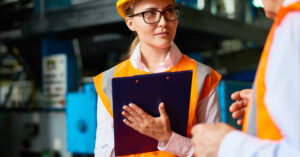
What to Look for When Performing a Loading Dock Safety Inspection
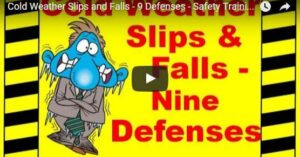
Cold Weather Slips and Falls – 9 Defenses
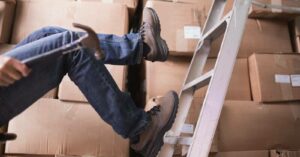
Ladder Safety
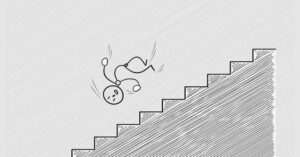
Stairway Fall Protection
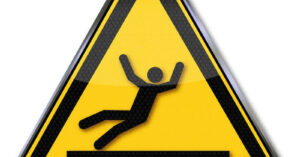
Prevent Slip, Trip and Fall Accidents
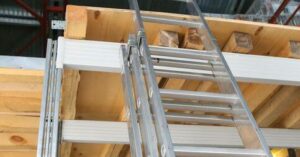
Ladder Storage

Avoid Slip and Trip Accidents
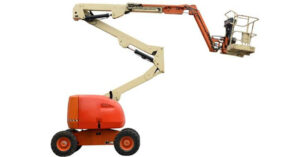

Aerial Platform Safety
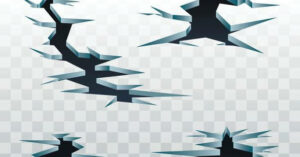
How to Respond When Someone Falls Through the Ice
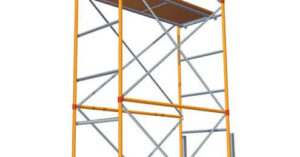
Scaffold Safety
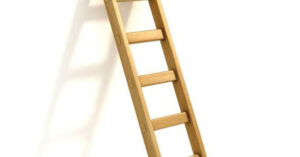
Fixed Ladder Safety
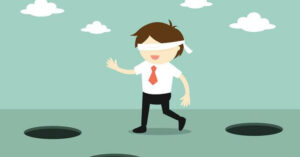
Avoid Holes
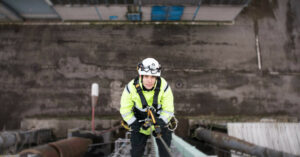
How to Properly Wear a Full Body Fall Protection Harness
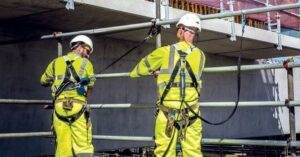
Self-Retracting Lanyards
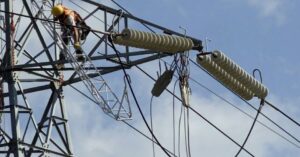
Fall Safety
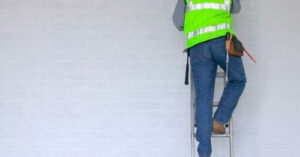
Master the Three-Point Contact Rule
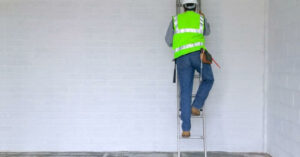
Be Secure Above the Ground
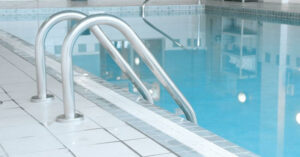
Don’t Run Around Pools
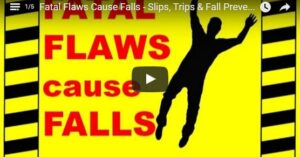
Fatal Flaws Cause Falls – Slips, Trips & Fall Prevention
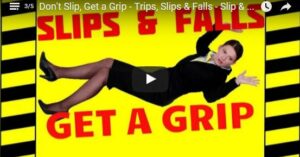
Don’t Slip, Get a Grip
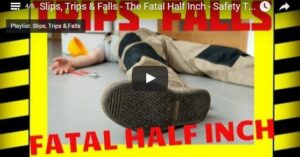
Slips, Trips & Falls – The Fatal Half Inch
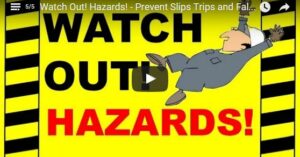
Watch Out! Hazards! – Prevent Slips Trips and Falls
- +1 (800) 826-0777
- VIRTUAL TOUR
- Mass Notification
- Threat Intelligence
- Employee Safety Monitoring
- Travel Risk Management
- Emergency Preparedness
- Remote Workforce
- Location and Asset Protection
- Business Continuity
- Why AlertMedia
- Who We Serve
- Customer Spotlights
- Resource Library
- Downloads & Guides
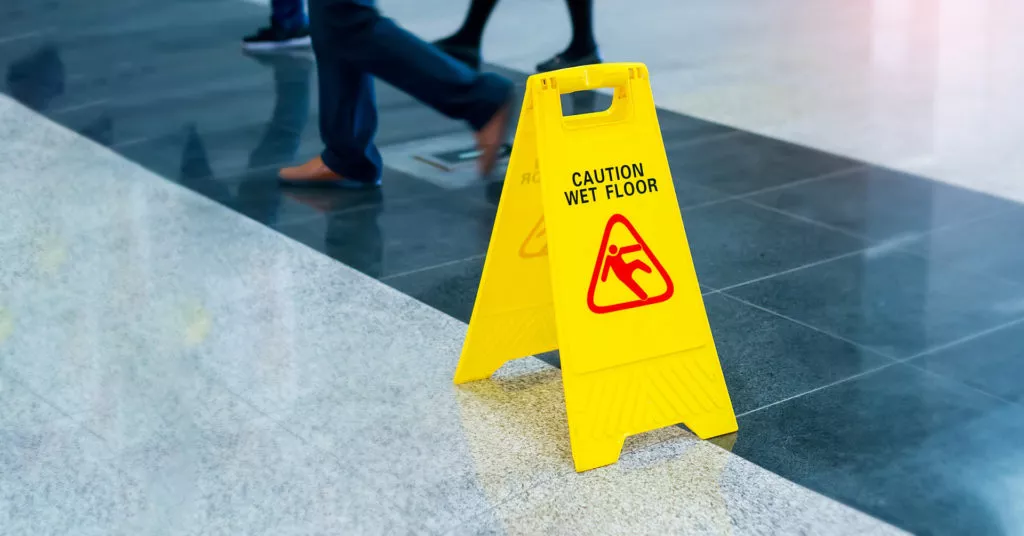
Prevent Workplace Slips, Trips, and Falls—8 Safety Tips
Mopping up a spill or double-checking a guardrail might seem like simple common sense, but slips, trips, and falls are the second most common cause of death at work. These are life-saving procedures. Keep reading for practical tips to prevent workplace accidents.
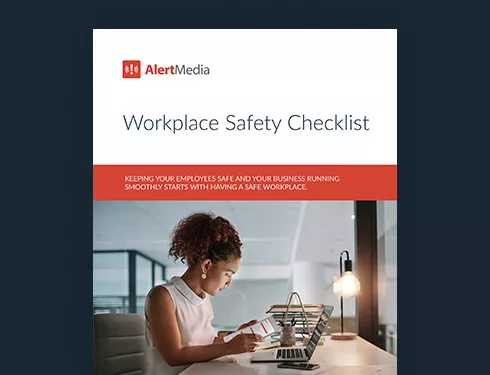
- Slip, Trip, and Fall Hazards Listed
- Clarifying OSHA Standards
- Prevent Workplace Slips, Trips, and Falls
These are familiar scenarios at home: slipping on a wet floor in the kitchen and tripping over a toy left out by the kids. While annoying, these accidents are typically minor hazards in the home. You might stub your toe, but rarely are there severe consequences.
In the workplace, it’s a different and far more serious story. Slips, trips, and falls account for over 200,000 workplace injuries per year. In 2020, nearly one in five accidents leading to missed work was due to a slip, trip, or fall. They’re also the second-leading cause of workplace fatalities.
As a safety leader, you’re responsible for your company’s duty of care and for providing a safe workplace . This blog post will examine common hazards leading to slips, trips, and falls and the steps you can take to minimize injury risks for your team.
Download Our Workplace Safety Checklist
What are slip, trip, and fall hazards in the workplace.
Accidents involving slips, trips, and falls are often grouped together. While they’re similar, it’s important to understand the distinction since they each have different causes and consequences.
Slips occur when someone’s footwear loses traction with the surface they’re on, causing a loss of balance. Under some circumstances, slipping can lead to a fall.
Trips happen when someone hits their foot or lower leg on an object. As their upper body continues moving forward while their lower body remains stationary, the person may lose their balance in the process.
Falls often result from slips or trips, but they can also happen on their own. For example, a worker on a ladder or scaffolding can lose their balance and fall without slipping or tripping. Falls are also possible on flat surfaces and can still cause serious injuries.
Once you understand the hazards that lead to each type of accident, you can identify and mitigate risks in your workplace. Here are some of the most common causes of slips, trips, and falls in the workplace:
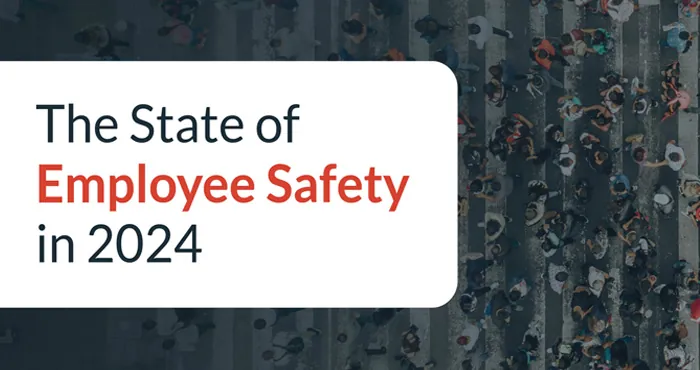
Slip Hazards
- Spills of wet or dry substances
- The cleaning process during spill removal
- Employees rushing or not paying attention to workplace conditions, especially while carrying objects
- Slippery floor surfaces such as marble or laminate
- Wet surfaces
- Poor lighting that obscures hazards
- Inappropriate footwear for the environment
- Transitioning between different types of surfaces
Trip Hazards
- Objects or obstructions in walkways
- Uneven surfaces on flooring or concrete
- Cables, cords, and hoses that aren’t properly secured or organized
- Unmarked steps or ramps
- Irregular stairs or stairs without railings
- Carpet, rugs, or mats with wrinkles or lifted edges
Fall Hazards
- Improperly used or poorly maintained ladders
- Elevated surfaces without guardrails
- Floor and wall openings
- Working in elevated environments without a safety harness
- Ill-fitting or improperly used PPE, such as helmets and safety lines
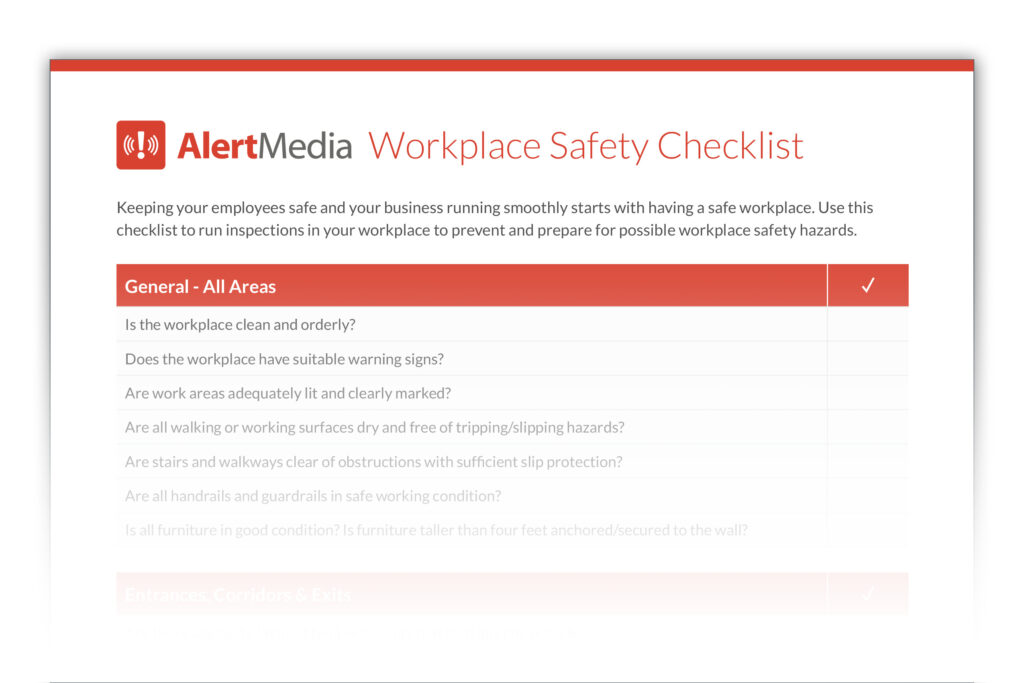
Preview the Workplace Safety Checklist
Are There OSHA Standards Related to Slips, Trips, and Falls?
Despite how common these injuries are, there is no specific OSHA standard on slips, trips, and falls. However, several OSHA rules indirectly address the same hazards.
The most important regulation to be aware of is 29 CFR 1910 Subpart D, which covers walking and working surfaces. OSHA updated the standard in 2017, introducing many upgrades to fall protection system requirements, improved employer-provided inspection guidelines, and a greater emphasis on safety training for employees.
For the construction industry, 29 CFR 1916 contains numerous fall-related regulations. Subpart M specifically addresses fall prevention, but other sections, such as Subpart L (scaffolds) and Subpart E (personal protective and lifesaving equipment), are also relevant. OSHA used 29 CFR 1916 as guidance when revising 29 CFR 1910, so the two guidelines now reflect many of the same OSHA violations .
As with any other workplace hazard or accident, OSHA recordkeeping requirements still apply in the event of a slip, trip, or fall incident. Internally, the reporting process is also an opportunity to review the details of the incident and determine how you can update your workplace safety policy to prevent similar accidents in the future.
How to Prevent Slips, Trips, and Falls in the Workplace
Many hazards that cause slips, trips, and falls are inevitable. However, injuries and accidents are not. To prevent slips, trips, and falls, train your employees to follow a three-step process:
- Recognize the hazard: Identify conditions that could lead to a slip, trip, or fall.
- Evaluate the hazard: Examine the situation and determine what level of risk it presents and who it affects.
- Control the hazard: Avoid the risk by removing the hazard (such as mopping up a spill) or implementing safety equipment and procedures (such as installing handrails on an elevated platform).
Here are eight workplace safety tips to prevent falls, trips, and slips.
1. Teach situational awareness
Since many causes of slips, trips, and falls are foreseeable, situational awareness in the workplace is one of the best preventative measures. Encourage your employees to pay attention to their surroundings and the risks they present:
- Look at walking surfaces for spills, obstacles, or other potential hazards
- Watch for signage that warns of increased hazards
- Be aware of conditions such as weather or time of day that might increase the risk of an accident
- Take shorter and more cautious steps on slippery surfaces
2. Encourage proper footwear
Like any other form of PPE, proper footwear can significantly reduce the risk of accidents. Research has found that slip-resistant shoes can reduce injury claims by 67% in environments with slippery work surfaces.
Employees should regularly inspect their shoes and make sure the soles aren’t worn out, as the lack of tread increases the danger of slipping. Additionally, anyone who works in conditions exposed to winter weather hazards should wear insulated boots. Cold temperatures can decrease muscle function, increasing the risk of slipping, tripping, or falling.
3. Utilize signage
Signage is an effective warning system for many workplace risks, but it can be especially effective in preventing slips, trips, and falls. There are two types of signs you can use to increase occupational safety:
- Temporary: Use warning signs while addressing a new hazard, such as cleaning up a spill, repairing a handrail, or replacing a ripped carpet. While temporary signage can help prevent injuries, you still need to address the actual hazard as quickly as possible.
- Permanent: For unavoidable hazards, such as slippery surfaces, a permanent sign can help warn employees to be careful. Use these sparingly, though, as it’s easy for people to ignore signs they see every day.
4. Keep floors clear and clean
Good housekeeping can help prevent most slips, trips, and falls. The details of keeping walking areas clean will vary widely by work environment, but there are a few common themes to encourage workplace safety:
- Report spills immediately, and warn nearby employees until someone can clean the contaminated surface
- Keep walkways clear of obstacles, loose objects, and anything that someone could trip over
- Place mats at entrances and exits so people can dry their shoes and avoid tracking water or other substances around the workplace
- Install handrails on stairways and elevated walkways
5. Apply non-slip mats and coatings
In some situations, keeping floors from becoming slippery is nearly impossible. Whether it’s liquid splashing or steam condensing, you must focus on mitigating the risk rather than avoiding it altogether.
For smaller or less demanding settings, non-slip mats can help employees maintain traction while walking around. In other cases, treating the floor with a permanent coating can help reduce slipping risks, even in the constant presence of liquids.
Who is at risk for slips, trips, and falls?
While all industries have some level of risk for a slip, trip, or fall, there are some industries where the risk is much higher, and the potential result could be much more dangerous. Here are some of the highest-risk industries:
- Construction
- Manufacturing
- Transportation/shipping/logistics
- Outdoor maintenance/groundskeeping
- Foodservice/hospitality
6. Ensure proper lighting
To identify slip, trip, and fall hazards, your employees need to be able to see their surroundings. Make sure that all of your work areas have proper lighting, especially in areas that are more prone to unsafe conditions.
While this can be a challenge in outdoor work environments, especially at night, it’s even more critical in those situations. Environmental conditions can lead to increased risks, and employees need to be able to see and avoid them. Adequate lighting should also extend to parking lots and walking areas around your facilities.
7. Develop safety programs
Your company’s safety plans and programs should include specific guidelines for preventing slips, trips, and falls. There are a few key topics to consider when developing these policies:
- The types of surfaces employees work and walk on and whether they present extra risks
- Seasonal or regional conditions that could heighten hazards, such as winter weather threats
- Specific OSHA regulations that apply to your workplace
- Potentially hazardous equipment training such as ladder safety
- Regular inspection plans to ensure your team is maintaining a safe work environment
- Policies to report hazards using your company’s two-way communication platform
- First aid training , so employees are prepared to respond safely should injuries occur
8. Provide Slips, Trips, and Falls Training
Lastly, training your employees to avoid slips, trips, and falls will help keep them safe. Provide specific guidance on the environments they’ll work in and the hazards they’ll face. For example, a slips, trips, and falls safety talk for food service workers should focus on wet floors and walking safely in crowded, fast-paced environments. Conversely, office workers could use extra reminders to watch for stray power cords and keep walkways clear of boxes, files, and other tripping hazards.
Working slips, trips, and falls into your safety topics for meetings is also helpful. Regular safety talks or safety moments are an excellent opportunity to remind your team about seasonal risks or update them on newly installed safety measures.
Don’t Let Your Safety Standards Slip
Slips, trips, and falls are some of the most common workplace injuries. Fortunately, you can usually prevent them with proper planning and safety measures.
By making slip, trip, and fall prevention a part of your company’s safety culture, you can ensure your employees are aware of their surroundings and ready to look out for each other’s safety. Enable them to report hazards easily, address risks quickly, and train them to avoid situations that are likely to cause injury.
With the right planning and prevention, even the most intense work environments can be as safe as a walk in the park.
More Articles You May Be Interested In
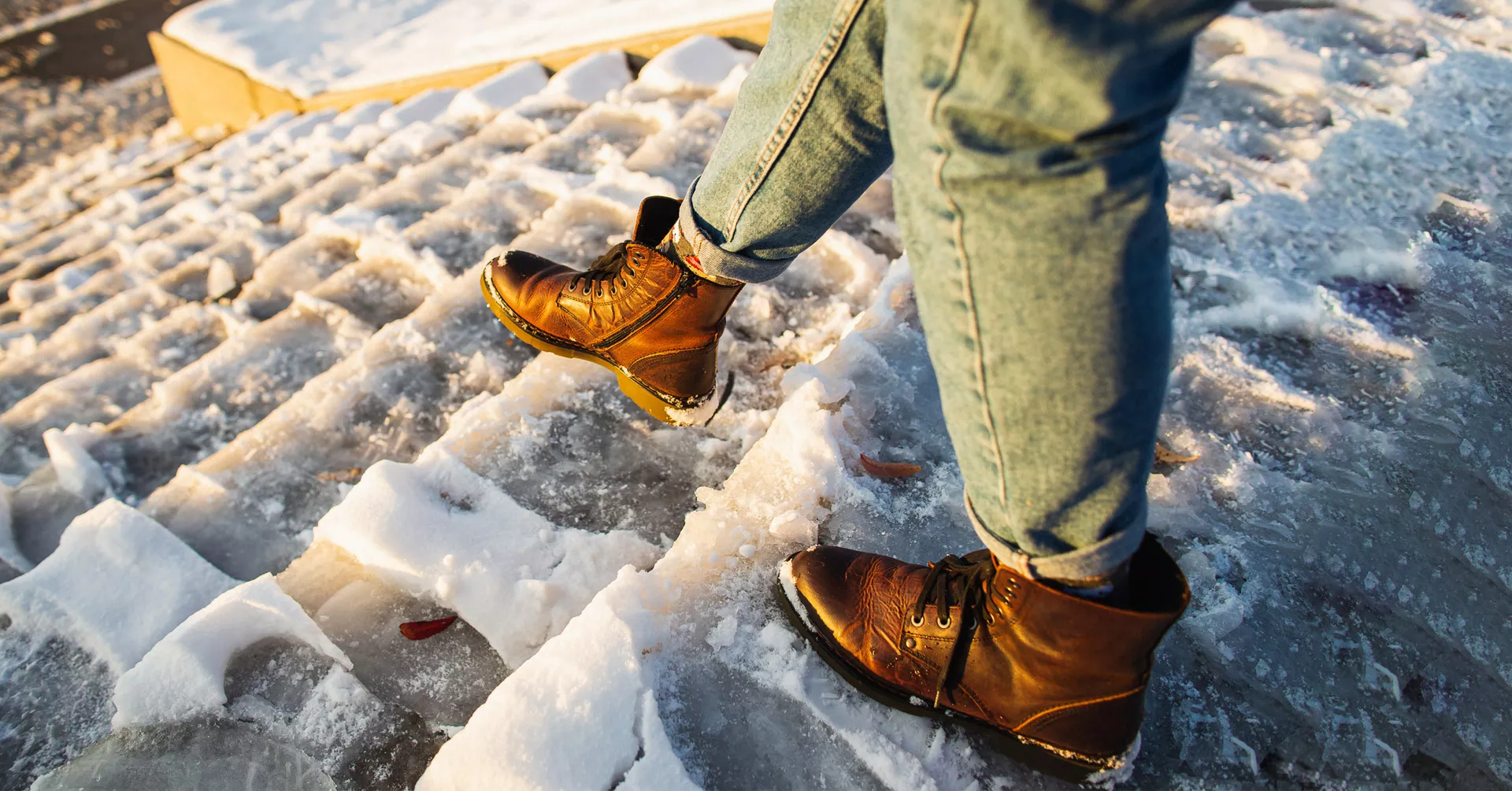
Workplace Safety Checklist
Please complete the form below to receive this resource.
Check Your Inbox!
The document you requested has been sent to your provided email address.
Cookies are required to play this video.
Click the blue shield icon on the bottom left of your screen to edit your cookie preferences.

- Health & Safety
- Hazards & exposures
Slips, trips & falls
Slips, trips, and falls put workers at risk of sprains, strains, bruises, concussions, and fractures. Falls often result from slipping or tripping.
Slips happen where there is not enough grip or traction between the footwear and the walking surface. This can be a result of water, oil, grease, or dust on the floor. Loose rugs or mats, floors with varying traction, and the wrong footwear can also cause slips.
Trips and falls can happen when people lose their balance after their feet collide with objects. Common tripping hazards in the workplace include:
- Damaged or worn carpets, rugs, and mats
- Uneven flooring
- Cluttered walkways
- Uncovered cables
- Poor lighting
- Obstructed views
See our resources for information about reducing the risk of slips, trips, and falls.
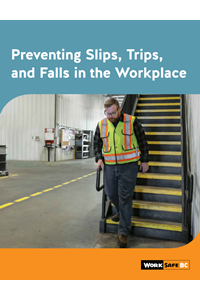
Preventing Slips, Trips, and Falls in the Workplace
This book, written for employers and joint health and safety committees, describes common misconceptions about slips, trips, and falls as well as the factors that contribute to their causes. It also...
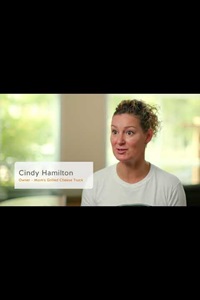
Kitchen Safety: Preventing Slips, Trips, and Falls
Slips, trips, and falls due to wet or greasy floors are common occurrences in kitchens. This video demonstrates safe work procedures to prevent injuries caused by slips, trips, and falls.
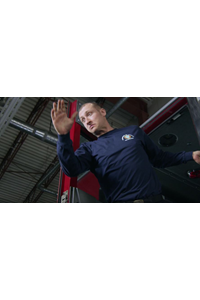
Safe in the Hall
Firefighter safety training routinely focuses on fire-related safety issues. However, at least one-third of all injuries to firefighters occur in fire halls. This video uses three scenarios to illustrate...
- Slips, trips, and falls are B.C.’s costliest workplace incidents: WorkSafeBC Published on: October 24, 2023
- Our Union Family
- Who We Represent
- Executive Board
- Constituency Groups
- Job Openings
- Report A Problem At Work
- Update Your Membership Information
- Get A Copy of Your Contract
- Find Your Union Representative
- Health & Welfare Benefits
- Know Your Rights
- Free GED Program
- Free Language Classes
- Free Legal Benefit for Giant, Safeway, & Shoppers Members
- Free Workforce Essential Courses
- Scholarships
- Union Deals & Discounts
- Take Action
- Register to Vote
- Join the Active Ballot Club
- Sign Up for Email Updates

Safety First: How to Avoid Slips, Trips and Falls
Jun 14, 2024
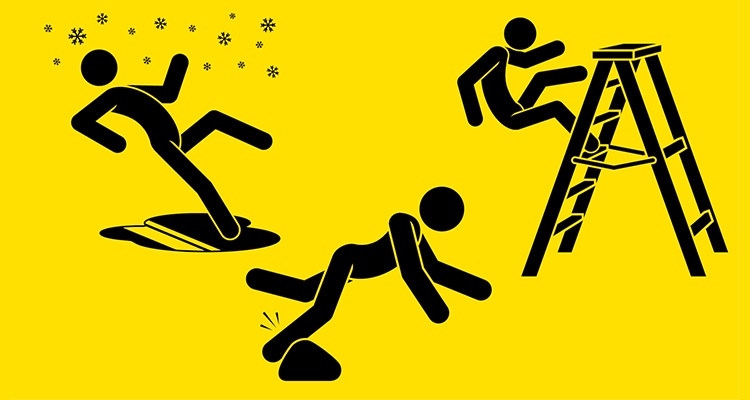
While they may not seem like a leading cause of injury, slips, trips and falls are among the most dangerous hazards we face on the job:
- In 2022, 16 percent of all accidental deaths were the result of slips, trips and falls (Source: Bureau of Labor Statistics )
- A worker died every 96 minutes from a work-related injury in 2022 (Source: Bureau of Labor Statistics )
- Slips and falls are the leading cause of workers’ compensation claims and are the leading cause of occupational injury for people aged 55 years and older. (source: National Floor Safety Institute ).
One reason is that the cause is often commonplace objects that are all around us. All it takes is a misplaced box. A slick floor after customers track in the wet weather. Or a spill from a product on the shelf. Many of us work around these hazards all day long without even noticing, which is why paying extra attention could save you or a fellow coworker from serious injury.
To avoid injury, look out for the following hazards your workplace:
- Walkway surface spills involving oil, water and other liquids.
- Weather-related hazards such as snow, ice and wet surfaces from rain.
- The use of inappropriate footwear.
- Walkway surfaces that are in disrepair.
- Walking surfaces that are too slick or smooth, not allowing adequate footwear traction.
- Clutter around workspaces or in walking paths or aisles.
- Employers failing to train workers about how to avoid slips, trips, and falls.
Your employer is ultimately responsible for maintaining a safe work environment without dangers that can lead to slips, trips and falls. Under the U.S. Occupational Safety and Health Administration (OSHA) Act of 1970 , employers are responsible for providing safe and healthful workplaces for their employees.
Your workplace should take the following preventive measures recommended by OSHA:
- Keep floor surfaces clean and clear.
- Ensure that wet floor signs are posted as needed, and maintain proper drainage.
- Maintain clear aisles and prevent obstructions.
- Ensure that walkway surfaces are in good repair.
- Report and clean up spills immediately.
- Provide non-slip shoes and mats in wet surface areas.
- Minimize carpet and matting trip hazards.
- Use frequent housekeeping procedures and provide adequate lighting in poorly lit areas such as halls and stairways.
- Maintain and eliminate uneven floor surfaces.
In addition, if you have to work outside, OSHA requires employers to ensure that snow and ice are cleared from walking surfaces — and that deicer is spread — as quickly as possible after a winter storm . When walking on snow or ice is unavoidable, your employer is required to train you and your coworkers to wear footwear that has good traction and insulation, and to take short steps and walk at a slower pace.
If you see a safety hazard in your workplace, please contact your shop steward or union representative and inform your supervisor of the safety hazard right away before anyone gets hurt.
Get up-to-date UND safety information.
Recognizing and preventing work-related injuries in colleges
In 2021 there were 132 work-related fatalities in education, according to the National Safety Council. Although this does not seem like much, educators often consider a college campus a safe place of learning and growth.
However, it is important to remember that higher education institutions are also workplaces. Just like any other workplace, accidents can happen on college campuses. Figures show 95,000 cases of stress, depression, and anxiety in education staff each year.
Understanding work-related injuries
Work-related injuries in higher education can occur in various settings, from classrooms and labs to administrative offices and maintenance areas. These injuries can result from a wide range of activities, including:
- Administrative tasks
- Maintenance work
- Assisting other teachers or staff
Common work-related injuries in higher education include slips, trips, falls, strains and exposure to hazardous materials.
Preventing Work-Related Injuries
Staff and students need to keep the campus environment safe. This includes promptly reporting any hazards, such as loose tiles, wet floors or malfunctioning equipment.
If your work involves sitting at a desk or computer for extended periods, ensure your workspace is ergonomically sound .
Institutions should provide proper safety training to staff who may risk exposure to hazardous materials. Knowing how to use safety gear and handle chemicals can prevent accidents.
Wear appropriate footwear for the tasks you will be performing. Non-slip shoes can help prevent falls, especially during wet or snowy weather.
Familiarize yourself with emergency procedures and the location of fire exits and first-aid kits.
Reporting and seeking help
If you witness or experience a work-related injury on campus, report it immediately to the appropriate authorities. Prompt reporting ensures that staff takes action to prevent further incidents.
By following safety guidelines, maintaining a vigilant attitude and staying informed, staff and students can contribute to a safer campus environment.
Steps to take immediately after the injury
Report the injury: Ensure you report your the injury as soon as possible.
Seek medical attention: Get the necessary medical treatment. North Dakota Workforce Safety & Insurance requires using a designated medical provider.
Document everything: Keep detailed records of the injury, treatment, communications and any expenses related to the injury.
Understanding the workers’ compensation process
Workers’ compensation provides benefits to employees who suffer injuries or illnesses at work. This system can cover medical expenses, lost wages, and rehabilitation costs.
Familiarize yourself with the basics of this process. Understanding deadlines for reporting injuries, filing claims, and the types of benefits available will help guide you through each step.
Support after a workplace injury
When one gets injured on the job, it can be a stressful and challenging time. Knowing how to ask for and receive support through the workers’ compensation process can make a significant difference in your recovery and well-being.
Stay safe out there, take care of yourself and reach out for help it could change your life.
Leave a Comment Cancel reply
Your email address will not be published. All comments will be reviewed prior to posting.
Related Posts
June is National Safety Month – Week 3
June is national safety month – week 2, june is national safety month – week 1.
Election latest: Pub registered as political party; Farage to launch Reform manifesto in Wales
Nigel Farage is set to launch Reform UK's manifesto tomorrow in Wales. Meanwhile, a publican has registered his bar as a political party in the hopes of drumming up business.
Monday 17 June 2024 06:26, UK
- General Election 2024
Please use Chrome browser for a more accessible video player
- Reform UK to launch 'contract with the people' today
- Labour focus campaign on jobs | Tories take aim at energy policy
- Warning that 250,000 children hit by two-child benefit cap next year
- Live reporting by Faith Ridler
Election essentials
- Check parties' manifesto pledges: Conservatives | Greens | Labour | Lib Dems | Plaid Cymru
- Trackers: Who's leading polls? | Is PM keeping promises?
- Campaign Heritage: Memorable moments from elections gone by
- Follow Sky's politics podcasts: Electoral Dysfunction | Politics At Jack And Sam's
- Read more: Who is standing down? | Key seats to watch | How to register to vote | What counts as voter ID? | Check if your constituency is changing | Your essential guide to election lingo | Sky's election night plans
Nigel Farage will kick off Reform UK's policies in South Wales on Monday, where he is poised to put pressure on the Tories over immigration and tax.
The Reform leader will launch his party's "contract with the people" - which they will not call a manifesto - in Merthyr Tydfil to highlight "what happens to a country when Labour is in charge".
The Senedd in Cardiff is the devolved legislature of Wales and is currently run by a Labour-administration.
The launch will follow a productive few days for Reform that saw his party overtake the Conservatives for the first time - prompting Mr Farage to declare his party the "opposition" to Labour.
His fortunes increased further after another poll by Survation for The Sunday Times showed the Tories could be reduced to just 72 seats in the next parliament, while a separate survey by Savanta for The Sunday Telegraph showed Reform up another three points.
You can read more from Sky News below:
Good morning!
It's the start of a new week on the election trail, and manifesto launches are set to continue today - with Reform UK preparing to lay out its "contract" with the British people.
There's a busy day elsewhere, and we will likely hear from members of the Conservative Party, Labour and the Liberal Democrats in turn.
Here's what to watch out for today:
- Nigel Farage will kick off Reform UK's policies in South Wales this afternoon, where he is poised to put pressure on the Tories over immigration and tax;
- Labour is launching a pledge to create 650,000 new jobs with its £7.3bn new National Wealth Fund, which it says will focus on Britain's "industrial heartlands";
- The party says it will offer new jobs for plumbers, electricians, engineers and technicians, which will be created in the next five years across the UK;
- Meanwhile, the Conservatives will focus on energy policy today, with Prime Minister Rishi Sunak campaigning in east Yorkshire, the East Midlands and East of England;
- It is expected that Mr Sunak will attack Labour’s own energy plans, claiming the party's oil and gas ban would create a £4.5bn budget black hole in lost tax revenues – with higher taxes required to cover the shortfall and risk 200,000 job losses ;
- And a leading thinktank has warned that an extra 250,000 children will be hit by the two-child benefit cap next year, rising to an extra half a million by 2029.
We'll be discussing all of that and more with:
- Defence Secretary Grant Shapps at 7.15am;
- Dr David Bull , deputy leader of Reform UK, at 7.30am;
- Jonathan Ashworth , shadow paymaster general, 8.15am.
Follow along for live coverage of the general election campaign throughout the day.
Covering a general election campaign as a journalist can largely be summed up in two words - battle bus.
Not too dissimilar to the coaches that rockstars use for their tours, battle buses are the vehicles each political party uses to transport their leaders, candidates, and advisers around the country during the election campaign.
Sky's political correspondents have each been following a different party - often joining them on the buses.
Here we take you behind the scenes on the campaign trail this week for the Conservatives, Labour, and the Liberal Democrats.
Sir Keir Starmer has urged England to "make it a summer to remember" ahead of their Euro 2024 opener against Serbia, while Rishi Sunak told the squad "we're all behind you".
Thousands of Three Lions fans have descended on Gelsenkirchen, in western Germany, as they hope to witness Gareth Southgate's men's team make a winning start in Group C.
Sir Keir said: "There is no feeling like the build up to the first England game of an international tournament: the pubs filling up, the flags waving, the nerves and excitement building.
"As fans up and down the country get ready for kick off, I want to wish Gareth and the team all the best on behalf of the Labour Party.
"We will be with you for every twist, turn and VAR decision. England is behind you. Make it a summer to remember."
Sir Keir is expected to watch Sunday evening's game in a pub with friends.
Prime Minister Mr Sunak tweeted: "Come on England! We're all behind you. Make us proud."
Reform UK leader Nigel Farage posted an image doctored to show him with his arm around Southgate on X with the caption: "Good luck tonight @England!"
The sister of murdered Labour MP Jo Cox says intimidation of politicians is "completely unacceptable".
Asked about Nigel Farage being attacked with a milkshake and Rosie Duffield avoiding hustings over fears, Kim Leadbeater tells Ali Fortescue: "I think Jo, along with myself and many others, would find some of that behaviour totally and utterly unacceptable.
"Wherever you are on the political spectrum, whatever your views are, there's no excuse for that abuse, intimidation and threatening behaviour."
Ms Cox would have stood "firmly against that sort of behaviour", she says.
Politics should be about bringing people together and finding common ground as well as debating the issues, she adds.
Next speaking on the Politics Hub is Kim Leadbeater, the sister of murdered MP Jo Cox, on the eighth anniversary of her death.
Ms Leadbeater, who is standing for Labour, says the election campaign has not been "too bad" but there has been "inappropriate behaviour".
"I'm also quite sad that we've had people who have very openly said they are not standing in this general election because of the threats and the intimidation and the abuse that people in public life face."
Reform's clear objective is "to destroy the Conservative Party" regardless of the implications, says former tory cabinet minister Sir Liam Fox.
"Nigel Farage is not a friend of the Conservative Part, Reform is not an ally of the Conservative Party".
Asked about Conservative voters turning to Reform, he says: "I can understand their frustrations, but they have to understand that the price for what they think is a protest vote would be a Labour government that would do the very things, for example in the referendum, that they voted against. It is completely illogical."
Conservative politician Sir Liam Fox is first to face questions asked by political correspondent Ali Fortescue on the Politics Hub.
Asked whether he thinks his party has a good record on the NHS, he says: "Yes I do. We have been in charge of the NHS for longer than any other party since its inception."
He says it will "take time" for the effects of the pandemic and strikes to "settle down".
Analysis by the Nuffield Trust think tank suggested both Labour and Tory pledges on the NHS would leave the health service with lower annual funding increases – at 1.1% and 0.9% respectively – than during the austerity era.
The Politics Hub is now underway, hosted by political correspondent Ali Fortescue .
Coming up this evening:
- Sir Liam Fox, former Conservative cabinet minister
- Kim Leadbeater, Labour candidate and sister of Jo Cox
And joining Sky News on the panel is:
- John McTernan, former advisor to Tony Blair
- Mercy Muroki, former adviser to Conservative minister Kemi Badenoch
Watch live on Sky News, in the stream at the top of this page, and follow live updates here in the Politics Hub.
Nigel Farage will unveil Reform UK's manifesto in Wales tomorrow.
Speaking ahead of the launch, he took the opportunity to attack Labour, saying Wales demonstrated "what happens to a country when Labour is in charge".
"Meanwhile, the Tories have been the official opposition almost solidly since 2016 and have achieved zilch," he said.
Reform's policies will be set out by Mr Farage in Merthyr Tydfil, South Wales, at 1pm.
The party is fighting the election on immigration, with policies already announced including an "employer immigration tax" on companies who choose to employ overseas workers instead of British citizens.
Reform UK has vowed to freeze lawful immigration with the exception of healthcare and leave the European Convention on Human Rights.
It has promised there would be no tax on earnings under £20,000 a year and that it would abolish the government's net-zero targets.
Be the first to get Breaking News
Install the Sky News app for free


- River City Live
- Newsletters
Justice Clarence Thomas took more trips paid for by donor Harlan Crow, Senate panel reveals
Mary Clare Jalonick
Associated Press
Senate Judiciary Committee Chairman Dick Durbin says his committee has uncovered at least three additional trips given to Justice Clarence Thomas by GOP megadonor Harlan Crow as part of the panel’s ethics investigation into the Supreme Court.
Durbin, D-Ill., said Thursday the committee obtained information from Crow that Thomas took three trips, and at least six flights, on Crow's private jet in 2017, 2019 and 2021. The panel also found evidence of private jet travel during trips to Indonesia and California that Thomas recently disclosed in an amendment to a 2019 financial disclosure report.
Recommended Videos
The Democratic-led Judiciary panel launched the investigation last year after several reports that Thomas had for years received undisclosed expensive gifts , including international travel, from Crow. The committee has since pushed the Supreme Court to adopt a stronger ethics code as trips by Thomas and Justice Samuel Alito came to light, along with six-figure book deals received by other justices.
The new information “makes it crystal clear that the highest court needs an enforceable code of conduct, because its members continue to choose not to meet the moment,” Durbin said in a statement.
There was no immediate comment from the court on the Senate report. In the past, Thomas has maintained that he is not required to disclose the many trips he and his wife took that were paid for the Texas megadonor because Crow and his wife Kathy are “among our dearest friends,” Thomas said in an April 2023 statement that he was advised by colleagues on the nation’s highest court and others in the federal judiciary that “this sort of personal hospitality from close personal friends, who did not have business before the Court, was not reportable.”
Thomas, 75, and his wife, Virginia, have traveled on Crow’s yacht and private jet in Indonesia as well as stayed at his private resort in New York’s Adirondack Mountains, ProPublica reported last year. ProPublica wrote that it could have cost more than $500,000 had Thomas chartered a plane and yacht himself.
Last week, Thomas said in his annual financial disclosure that Crow paid for a hotel room in Bali, Indonesia, for a single night in 2019, and food and lodging at a private club in Sonoma County, California, the same year. But he did not report the plane flights or the stay on Crow’s yacht.
In a statement released minutes after the Judiciary panel released its report, Crow’s office said he reached an agreement with the committee to provide information responsive to its requests going back seven years, “despite his serious and continued concerns about the legality and necessity of the inquiry.” The panel voted in November to authorize a subpoena for Crow as part of the probe, despite protests from all committee Republicans.
Crow, a longtime GOP donor based in Dallas, has maintained that he has never spoken with his friend about pending matters before the court.
The Judiciary panel said it will release a full report later this year. But among the details Durbin released Thursday were a 2017 trip Thomas took on Crow’s jet from St. Louis to Montana, along with a return flight from Montana to Dallas; round trip private jet travel in 2019 from Washington to Savannah, Ga., and a round trip flight on a private jet from Washington to San Jose, California, in 2021.
The committee said it also has evidence of private jet travel for the 2019 trip to Indonesia, along with documentation of the eight-day yacht excursion.
The justices adopted an ethics code in November, though Democrats say it is not strong enough because it lacks enforcement. The code treats travel, food and lodging as expenses rather than gifts, for which monetary values must be reported. Justices aren’t required to attach a value to expenses.
Starting last year, the justices also must report private plane travel that is given to them. Thomas has declined to report trips he took before those rules went into effect.
Associated Press writers Mark Sherman and Lindsay Whitehurst contributed to this report.
Copyright 2024 The Associated Press. All rights reserved. This material may not be published, broadcast, rewritten or redistributed without permission.
Click here to take a moment and familiarize yourself with our Community Guidelines.

IMAGES
VIDEO
COMMENTS
Slips, Trips, and Falls Safety Talk Template; Working at Heights Inspection Checklist; FAQs about Slips, Trips, and Falls. What are the main industries at risk for slips, trips, and falls? The National Safety Council lists the following industries as those that have the highest risk of slip, trip, and fall incidents:
Slips, Trips, and Falls Safety Talk. Slips, trips, and falls are one of the leading causes of injuries and fatalities in the workplace. According to OSHA, slip, trip, and fall incidents cause 15% of all accidental deaths and are second only to motor vehicle incidents as a cause of fatalities on the job.
Slip Hazards Safety Talk Slips, trips, and falls are one of the leading causes of injuries and fatalities in the workplace. According to OSHA, slip, trip, and fall incidents cause 15% of all accidental deaths and are second only to motor vehicle incidents as a cause of fatalities on the job.
This safety talk about slips, trips, and falls is one of the most important ones to have with your workers.
Download a Slips, Trips, and Falls toolbox talk pdf. Slips, trips and falls are a common reason for many of the injuries in workplaces. They can cause minor injuries but can also lead to serious, long-term injuries. Many slip, trips and falls are avoidable and there are usually easy solutions a workplace can apply to control the risk, either by ...
The second leading cause of unintentional injury-related death is falls, resulting in 42,114 deaths at home and at work. Depending on the industry, falls can be the leading cause of death at work.
The second-most common cause of workplace injury is a trip or slip hazard that leads to a fall. Find out how to prevent trips, slips, and falls.
Slips, trips, and falls are the second most common cause of workplace injuries in the United States. In this video we look at the causes and prevention and h...
In this toolbox talk, learn hazards on the jobsite that can cause slips, trips, and falls & how to avoid them. Download a PDF of this safety talk for free!
to help brace yourself should you start to slip or fall. Plus, you should always have one hand on the handrail when on the stairs. Dress for your day When it comes to choosing the proper footwear to prevent ... Prevent Slips, Trips and Falls 5 Minute Safety Talk. Created Date:
10-minute safety talk. Slip, trip, and fall. hazards. Key takeaways: • Many workers are hurt due to slips, trip, and falls. • Housekeeping is key to preventing slips, trips, falls. • Keep walkways and paths in good condition and free of items and debris. • Move with a clear view of surroundings, have good footwear tread, and avoid ...
This Toolbox Talk provides general guidelines for voluntary use by employers and is not intended to provide all necessary safety ... Almost one in five workplace injuries is the result of a slip, trip or fall. Slips happen where there
Slip, Trips & Falls Handout. maintains general industry regulations on walking/working surfaces that guard against hazards including clutter, protruding objects and wet conditions. These hazards can harm everyone in a facility, regardless of title or job responsibilities. Slips, trips, and falls cause nearly 700 fatalities per year and many ...
There are a number of ways that slips, trips, and falls can occur. Check out our Toolbox Talk to protect yourself in the work environment.
Slips, Trips and Falls - Safety Talk Handout WHAT'S AT STAKE You can slip, trip and fall in all kinds of workplaces, from offices to construction sites. Falls are ... You might slip on a slick surface and suddenly your feet go out from under you. Falls can also be caused by tripping on an obstacle - your feet get caught but your body keeps ...
Safety Talk Slips, Trips, and Falls Slips, trips, and falls can result in a wide range of serious injuries and account for approximately 20% of all work-related injuries. This is second only to auto accidents. How to Minimize the Risk 1. Assess the area for slip, trip, and fall hazards prior to beginning work. 2. Pay special attention to ...
Welcome to Safeopedia's Slips, Trips, and Falls Safety Meeting Topics. This is where you'll find videos, articles, and tips all regarding Slips, Trips, and Falls Safety. Get the right safety moment or safety meeting topic for your next tool box talk.
What to cover at your safety meeting on slips, trips, and falls. Discuss with your employees how being distracted increases the risk of injury and strategize on how best to avoid those distractions.
Slips, trips and falls can result in injuries with lasting effects and even death. It is important to understand how slips, trips and falls happen, how to identify hazards and how to eliminate or minimize the hazards.
Save lives and limbs by preventing slips, trips, and falls in the workplace. These 8 safety tips will help keep your employees safely on their feet.
Preventing Slips, Trips, and Falls in the Workplace. This book, written for employers and joint health and safety committees, describes common misconceptions about slips, trips, and falls as well as the factors that contribute to their causes.
Toolbox Talk: Slips, Trips, and Falls Safety Talk Slips, trips, and falls are one of the leading causes of injuries and fatalities in the workplace. According to OSHA, slip, trip, and fall incidents cause 15% of all accidental deaths, and are second only to motor vehicle incidents as a cause of fatalities on the job.
The National Safety Council is the leading nonprofit safety advocate. We focus on eliminating the leading causes of preventable injuries and deaths.
Slips, trips and falls are among the most dangerous hazards we face on the job. Learn how to stay safe in your workplace.
Common work-related injuries in higher education include slips, trips, falls, strains and exposure to hazardous materials. ... By following safety guidelines, maintaining a vigilant attitude and staying informed, staff and students can contribute to a safer campus environment.
Election latest: Starmer avoids saying where funding for NHS reform will come from as poll suggests public backs tax rises to pay for healthcare
Follow all the build up to the Battle for Number 10 leaders' special event live on Sky News from 7pm. Rishi Sunak and Sir Keir Starmer will be grilled by political editor Beth Rigby and then face ...
Senate Judiciary Committee Chairman Dick Durbin says his committee has uncovered at least three additional luxury trips given to Justice Clarence Thomas by donors as part of the panel's ethics ...